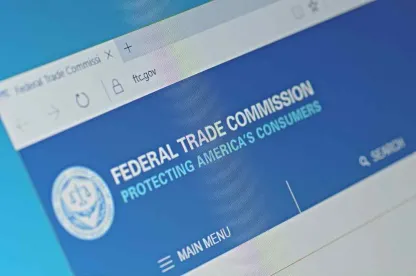In March 2023, the Federal Trade Commission (FTC) proposed tightened requirements on the Negative Option Rule in an effort to combat unfair or deceptive practices such as recurring charges for products or services that consumers do not want and cannot cancel without undue difficulty. Negative options include offers and features such as automatic renewals, free-to-pay and fee-to-pay conversions, prenotification plans and continuity programs. The FTC seeks to increase negative option requirements for marketers to avoid any deception or hindrance to consumers who wish to cancel or opt out of subscriptions, notifications or similar programs.
IN DEPTH
The FTC understands that consumers like free trials and recurring subscriptions, but the agency wants companies to clearly disclose any applicable fees and make it easier for consumers to cancel such offers. The FTC’s proposed rule would expand the Negative Option Rule to apply to essentially any offer or provision under which a consumer’s failure to take affirmative action (i.e., silence) is interpreted as acceptance of the offer. The FTC’s proposed rule also would impose heightened consent and disclosure requirements and would create an independent violation for general misrepresentation or omission claims separate and apart from the negative option offer. Finally, if the proposed rulemaking goes into effect, it would permit the FTC to seek monetary penalties for noncompliance with the rule. Although a business could ultimately challenge these broadened requirements in court, the FTC’s proposed rule aims to deter certain behaviors and business practices by marketers and advertisers.
Several elements of the FTC’s proposed rulemaking would have significant ramifications for an advertiser’s business:
-
Clear and Conspicuous Disclosures. Although the FTC has not altered what a company needs to disclose, the proposed rule would change how companies must disclose such information. The proposed rule would require the disclosure to be made through the same means as the advertising communication. Thus, if the communication made is both visual and audible (e.g., a television ad), the advertiser would have to present the disclosure both visibly and audibly. The FTC has taken the position that a disclosure is not considered clear and conspicuous if a consumer must take any action (e.g., clicking on a hyperlink or hovering over an icon) to see the disclosure. The FTC would take the position that the disclosure must be on the same page as the claim, and it cannot be within an unavoidable link. Thus, the best practice for a business would be to disclose all information relevant to the negative option offer immediately next to the means of obtaining the consumer’s consent or the negative option feature. If the claim is not materially relevant to the negative option offer, advertisers should place disclosers before consumers “add to cart.”]
-
Consent. Contrary to the existent “expressed informed consent” requirement, the FTC’s proposed rule would heighten consent requirements for sellers to obtain “unambiguously affirmative consent” to the negative option separate and apart from any other part of the transaction and to obtain unambiguously affirmative consent to the rest of transaction, as well. The FTC proposes that the request for consent must be “free of any information that may serve as a distraction” and “any information not directly related to the material terms and conditions of any negative option feature.” FTC Proposed Negative Option Rule, 16 CFR Part 425, RIN 3084-AB60 at 32, 45. The proposed rule notes that consent could be sufficient “if th[e] seller obtains the required consent through a check box, signature, or other substantially similar methods which the consumer must affirmatively select or sign to accept the Negative Option Feature and no other portion of the transaction.” Id. At 49. However, the rule raises the question of how to determine what constitutes “the rest” of a transaction. ]
-
Simple Cancellation (“Click to Cancel”). The FTC proposes a “cancellation mechanism that mirrors the customer’s method of enrollment.” Its proposed “click-to-cancel” provision would further require companies “to provide an accessible cancellation mechanism on the same website or web-based application used for sign-up.” Id. at 33, 51. Currently, under the Restore Online Shoppers’ Confidence Act, businesses must provide consumers with a simple cancellation mechanism, but this new proposal would require companies to make cancellation at least as easy as enrollment and to provide cancellation options through the same medium the consumer used to enroll. The proposed rule also states that “[t]he seller must immediately cancel the Negative Option Feature upon request from a consumer, unless the seller obtains the consumer’s unambiguously affirmative consent to receive a Save prior to cancellation.” The FTC does not define “immediately,” however. Id. at 81. Further, the FTC provides little insight into whether companies can introduce any friction into the cancellation process—for example, by asking questions to understand why a consumer is canceling.
-
Annual Reminders for Negative Option Features Not Involving Physical Good. The proposed rule states that “it is a violation of this Rule and an unfair act or practice in violation of Section 5 of the FTC Act for a Negative Option Seller to fail to provide consumers reminders, at least annually, identifying the product or service, the frequency and amount of charges, and the means to cancel.” Id. at. 82. The FTC has not provided details regarding what constitutes “annual,” but it is clear that reminders should be sent through the same medium that the consumer used to enroll.
Once the proposed rulemaking is published in the Federal Register, the public and stakeholders will have 60 days to submit comments. If your company is engaged in any of these practices, consider examining your company’s current negative option practices (including disclosures made), how consumer consent is obtained, the cancellation process and the overall user experience to see if you are compliant with the current proposal. If such compliance would not be practical or possible, or would be unduly burdensome, consider submitting a public comment before any proposed rules are finalized.




 />i
/>i

